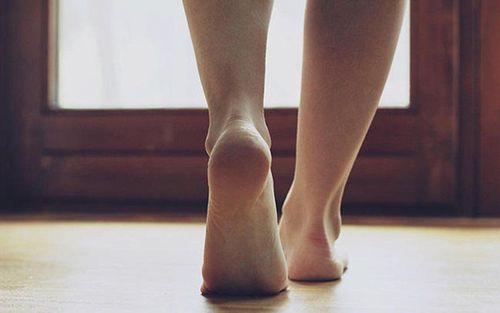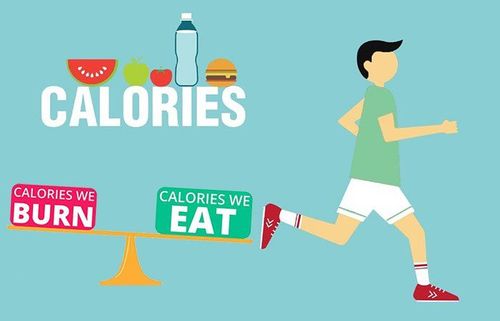This is an automatically translated article.
Resistance exercise is an active exercise performed by a patient in which dynamic or static contractions are resisted by an external force. The purpose is to increase muscle strength, increase muscle endurance, increase muscle work. The following article focuses on resistance training techniques.1. What is resistance training and resistance bands?
To increase muscle strength, increase endurance, it is necessary to have a suitable and effective movement technique, which is resistance training technique. In other words, resistance exercise is movement performed by the patient himself along with the resistance of the therapist or the device. Sometimes, many of us forget that, with a little support from equipment, we can achieve a much higher training effect - that is, the movement exercises that can resistance. You don't need expensive and modern technological equipment that is mounted on every part of your body or a rack for your entire body. You just push your body a little further away than you did when you were pushed, and a great way to do that is to pull a stretchy piece of elastic in multiple directions.Cheap and effective resistance bands for many training methods - can be much more effective than we think. While those looking to train intensely to quickly hit their goals may not get all they need from resistance bands, they are a great tool for increasing muscle strength. . You can also use them for fast-paced HIIT workouts if you want to improve your heart health and calorie burn.
Resistance bands are also the most portable and easy to carry form of fitness equipment. They can easily fit in our luggage and make working out in a hotel room as easy as working out in a home gym.
Resistance bands all work the same way, but they're not the same. You can get loop bands or different sizes and strengths, or a straight band with two ends. Often the latter will have a handle to make it easier to hold. The color of a strap is often an indication of its resistance: Black and blue tend to provide greater resistance than red and green, and they are also harder than yellow.
In the exercises that we will introduce below, two types of straps are used. A small loop rope is great for stepping in and placing just above or below your knees for movements like ponytails, while you'll need a larger loop that can be wrapped around your shoulders while you're standing. That's for exercises like the squat.
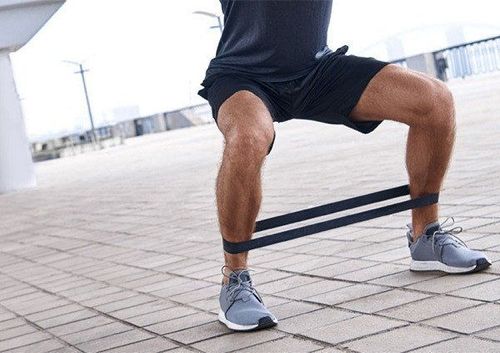
Tập vận động sử dụng dây kháng lực
2. 33 Resistance Bands Exercises You Can Do Anywhere
A - Lower Body Exercise
Front squat Our buttocks, thighs and hamstrings are the areas that will be affected by this exercise. The front squat can also strengthen your groin, hip flexors, and calves.
Steps:
Stand on the rope with feet slightly wider than shoulder width. Holding a handle in each hand, bring the end of the resistance band over your shoulder on each side. If the rope is too long, secure it by crossing your arms over your chest. Sit with your back straight, chest up, tone your abs, and push your knees out with your toes. Rise back to the starting position. Repeat 8–12 times. 2. Leg extension
This exercise is an advanced exercise for the legs
To perform this exercise, we perform the following steps:
Fix a loop rope in a low position on a support (eg. like an inclined bench), loop the other end around his ankles with the rope in the back position. Step away from the anchor to create tension on the rope and place your feet hip-width apart. Shift our weight to our left foot and lift our right foot off the floor. Extend your knee until it straightens out in front of us. Slowly return to the starting position. Repeat 8–12 times before switching legs. 3. Prone leg curl
This exercise works on our hamstrings, is done as follows:
Lie on your back and wrap a bandage around our right ankle, fixing the other end in a door to support. Move away from the anchor to create tension. Squeeze the body and bend the legs at the knees, bringing the heels towards the buttocks as far as possible. Slowly bring your legs back to the starting position. Repeat 10–15 reps, then switch sides. 4. Glute bridge
This exercise works very well on our glutes. To perform this exercise, we perform the following steps:
Tie the rope around the leg just above the knee. Lie on your back, place your feet on the floor, and bend your knees to 90 degrees. Lift your hips up until your shoulders, hips, and knees are in line, contracting your glutes throughout the entire movement. Repeat 15–20 reps. 5. Standing adductor
To strengthen our hips, groin and inner thighs, we do high-impact add-ons. The steps are as follows:
Secure the loop lanyard at ankle height to a support and stand with our left side facing the bracket, wrapping the free end around the right (outer) ankle. mine. Stand perpendicular to the rope and step away from the rack to create some tension. From a wide stance, do a quarter squat. Sweep ankles all over body, over standing leg, pressing thighs together. Slowly return to the starting position. Repeat 12–15 times before switching sides.
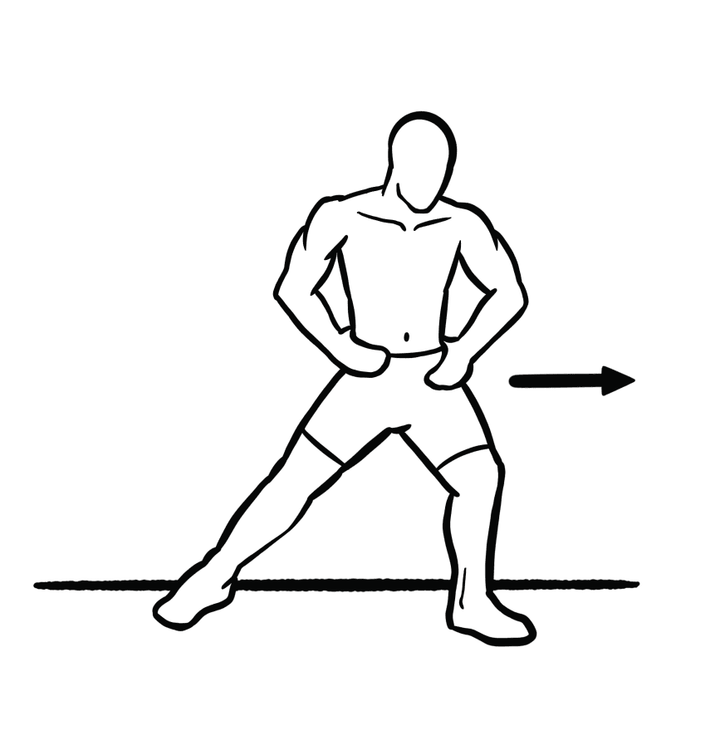
Tập vân động theo kiểu Standing adductor
The steps to do this move are as follows:
Loop around your legs just above your knees. Lie on your back with your hips and knees bent 90 degrees. Pull your knees apart while contracting your glutes for 2-3 seconds. Slowly return to the starting position. Repeat, aim for 10–12 repetitions. 7. Plantarflexion
To perform this exercise, proceed as follows:
Fix a loop of rope or therapy band around an anchor (like the leg of a table or coffee chair) and sit with one leg extended. out, wrap the other end of the loop around the top of our foot. Lean back, support your weight on your hands, and bend your feet forward until you feel a stretch in your shins. Control your movements, bring your toes behind, bend them towards our knees at a comfortable level. Slowly return to the starting position. Do 10–12 reps on each side. 8. Lateral band walk
The steps are as follows:
Step into a band or tie a band walk around our shins, which are positioned just above your ankles. Place your feet shoulder-width apart to create tension on the rope. Start in a semi-squat position Move our weight to the left, step to the side with the right foot. Move your stand slightly inward, but keep the laces taut. Take 8-10 steps before going back the other way. 9. Standing abduction
To perform this exercise, we need to do the following:
Fix the leash at ankle height and stand turning left side towards the anchor. Attach the end of the rope to our outer ankle and step outside to create tension on the rope. Move the support leg back so that your foot is elevated off the floor. Lift your working leg, slowly bringing your foot around to the outside, contracting your glutes. If you feel wobbly, grab a support (like a wall or the back of a chair). Lower back to starting position. Repeat 15-20 times on each side. 10. Seated abduction
To do this move, do the following:
Sit on the edge of a chair or bench and tie the rope around both legs, just above your knees. Place your feet slightly wider than shoulder width. Slowly press your knees and rotate your feet in as your legs come apart. Hold for 2 seconds, then bring your knees back together. Repeat 15-20 times B - Arm Exercise
Concentration curl Start in a forward lunge, with our right foot in front and place the middle of the strap under our right foot. Grasp one end of the cuff with your right hand, placing your elbow inside the knee (to target the biceps a little deeper). With palms facing away from the knees, roll the straps towards the shoulders, squeezing our biceps at the top. Slowly lower the strap back down. Repeat 8-10 times before switching sides. 2. Standing biceps curl
The movements are as follows:
Stand with feet shoulder width apart and place in the middle of the band. Grasp a handle in each hand, starting with your arms at your sides. With palms facing forward, pull arms toward shoulders by flexing elbows until you contract well. Slowly lower your back. Do 12–15 curls.
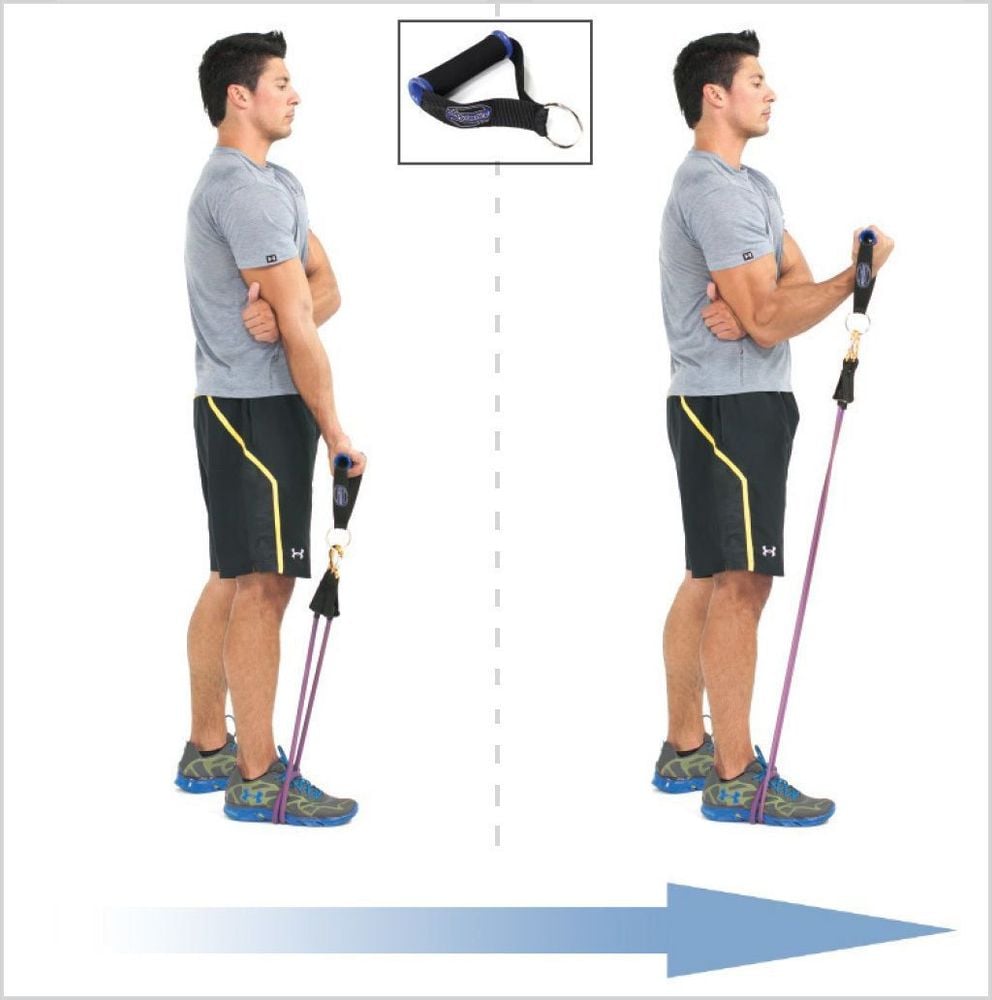
Tập vận động theo kiểu Standing biceps curl
Steps to perform:
Stand in a forward crouch position with right foot in front, position on the center of the ice. Holding each end of the band, place your arms at your sides and palms facing back. Bend your elbows until your forearms are parallel to the floor. Next, press your arms down, pushing the band behind your body until your arms are fully extended. Lower your back. Repeat 8-10 times. 4. Overhead triceps extension
Steps to do it:
Sit on a chair or bench, placing the center of a tube strip below your glutes. Grasp a handle in each hand and straighten your arms up, bending your elbows so your hands are positioned behind your neck. With palms facing the ceiling, press arms straight up until they are fully extended. Lower your back. Repeat 10–12 times before switching sides. 5. Kneeling crunch
To perform the exercise, proceed as follows:
Attach the rope to a high anchor (such as the top of a door or cable pole) and kneel, grasping each side of the rope. Extend your elbows to shoulder height, focus on your body, and bend toward your hips while contracting your abs. Slowly return to the starting position. Repeat 10–12 times. The above are exercises for everyone to refer to during practice. We should use resistance bands to make the exercises more effective, the exercises will affect more muscle groups, improving the normal training process. Exercises with resistance bands are very rich, so the practitioner will no longer feel bored with the same exercises being repeated.
Please dial HOTLINE for more information or register for an appointment HERE. Download MyVinmec app to make appointments faster and to manage your bookings easily.
Reference source: coachmag.co.uk




